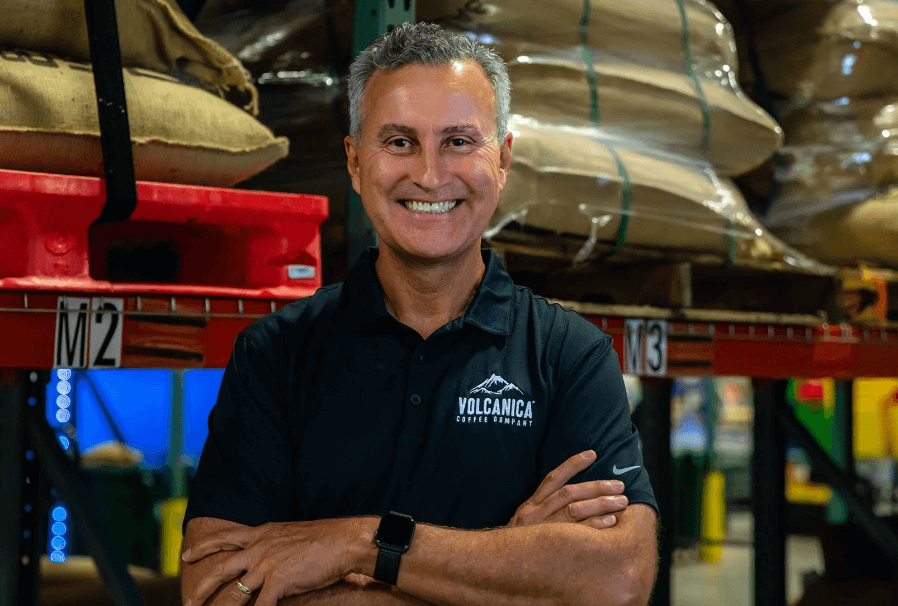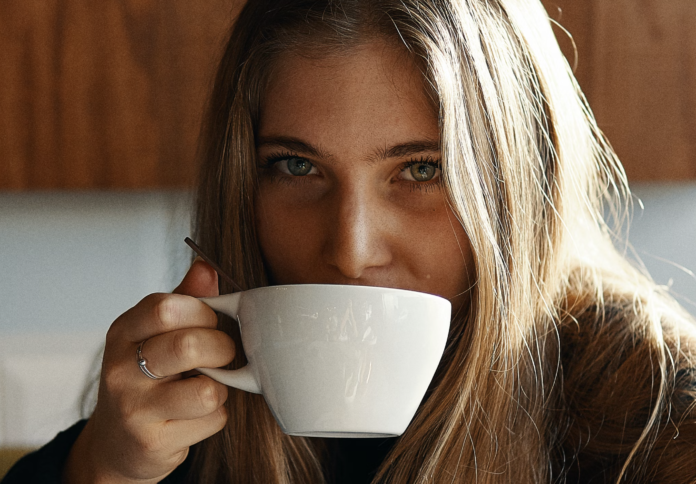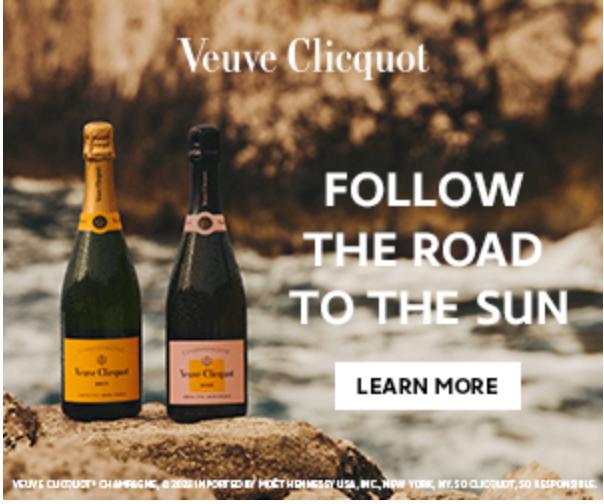Your Coffee Can (and Should) Taste Better, Maurice Contreras at Volcanica Coffee
Just about everyone has their coffee preferences. But the truth is, most of us aren’t enjoying coffee the best it can be and we don’t even know it. The beans, the grinding, the flavor (or lack thereof).
And before you ask, nope, good coffee doesn’t need to be expensive. Actually most great coffee is more affordable than the bad stuff you’re currently drinking. True story.
But I wanted to get answers and advice from a coffee expert, so I had a conversation with Maurice Contreras from Volcanica Coffee.

Native Costa Rican Maurice Contreras started Volcanica Coffee to import excellent-tasting coffee from volcanic regions, such as his homeland, to consumers. He started the company in his garage and now operates a coffee plant near Atlanta with 20 employees, including his wife and two adult children.
What is your favorite thing about coffee?
My favorite thing I like about coffee is really the flavor. That actually was how I got started. I’m from Costa Rica and for a long time I would do annual trips with the family. It was a family vacation. One of our trips we did a coffee farm tour. And just got to learn about coffee. And this is back in 2004. One of the things that dawned on me is how coffee in Costa Rica was so much better than coffee in the United States. I just didn’t understand why a 3rd world country had better coffee. The quality of coffee in the United States has really come down over several decades. So that’s when I thought that there was an opportunity to bring better tasting coffee or specialty coffee as it’s known today to the United States. That was really how it got started. It really was more about the flavor and just enjoying the richness of a Costa Rican coffee.
Is there a simple reason why first world coffee just isn’t as good?
Yeah, the general sense was because it became more of a highly produced, big production, big coffee house; and I’ll tell you a quick story. A lot of people don’t know this, the word Maxwell House, it actually is a chain of hotels. Some of them are still in existence. And so Maxwell House started from the Maxwell House Hotel in Memphis, Tennessee. They served breakfast and they had really good coffee and it became really popular. It became very famous, and then eventually it became its own brand Maxwell House, and then it ended up getting acquired by corporate conglomerates. And that really good tasting coffee just turned into [not-great] coffee.
So that’s really what happened to coffee in the United States. At one time, back in the 1920s, 1930s, 1940s, people would really appreciate good coffee and then just kind of lost sight of what good coffee was.
From a coffee lover’s point of view, what would you say to convince them to give your coffee a try?
That coffee really is an enjoyable drink to be appreciated and enjoyed for the flavor of what it is. It’s not just something to wake you up. But really coffee and all the different varieties, there’s a lot of flavor notes, a lot of different flavors to be enjoyed. A lot of it depends upon the different regions. My recommendation is try it out and get some good coffee with some flavor notes that you enjoy. Like, for example, Ethiopian coffees, they have a lot of berry notes, a lot of fruit tones, even red wine notes. Some of those things can really open up people’s perspective on coffee.
Before we jump more into coffee, I wanted to ask you about your background as far as the work you did before Volcanica Coffee
My career was in marketing specifically I was in the wireless telephone industry. It really was just about creating a brand. I was part of the startup team at TracFone Wireless which is now a part of Verizon. I was the National Director, I created the brand. In fact, there’s still a lot of things in the brand that I created. I had a passion for marketing.
It was kinda like, “Hey, gee whiz, what if I created my own brand and just created a business?”
And so I actually was on a hunt for a couple of years thinking what would be a good business? And then I just kind of stumbled on coffee because it was staring me in the face.
There’s such a message in there. The success you’re currently riding is because you took industry knowledge of marketing, a personal passion for coffee, and took the risk of putting them together in a business start-up.
Yep, that’s true. It was a risk because I was making a good living, I had a young family, I didn’t wanna affect any of that. It was something part-time, working nights and weekends, that’s how it all started out. I
How did your family feel about that? Was there anxiety?
It was definitely a struggle and I loved spending time with them and being with them. But part of how I resolved that was I would just wake up early in the morning and spend 1-2 hours before I had to go to work doing this. I didn’t want to neglect my family and I didn’t.
There’s so many people out there who aspire to take those steps and they always find reasons not to, but you found a way. When people are drinking your coffee, they’re not just drinking delicious coffee, they’re supporting someone who took a huge chance, who followed his passions.
So segueing to the actual coffee part now.
Your website mentions coffee regions and how the region’s soil contributes to the taste. A lot of our audience who’s into food and wine will realize the terroir aspect is very familiar to that.
Can you pick two or three regions and explain their soil and how it contributes to the taste?
I’ll start with African coffees. Their soil is very unique. Coffees from Africa tend to have a lot of berry notes, a lot more flavor of fruit which is very unique and very different compared to coffees from Indonesia.
Indonesian coffees tend to be lower in acidity. Acidity provides flavor but they’re still very good tasting coffees, even though they’re lower in acidity.
Also the coffee in Indonesia, Sumatra, for example, Papua New Guinea, and even Hawaiian Kona coffees, those tend to have a lot of boldness. When you taste the cup, your mouth just tends to [recognize] that bold flavor, which you don’t get in African coffees. So those are a couple examples.
So really it is like old world wine versus new world wine. A noticeable difference in mouth feel depending on what region you’re going after.
When people ask, Hey, what kind of coffee should I buy? I always ask, what kind of flavors do you like? Start there. Then for people that are experimenting, try different coffees from different regions.
You mentioned that you’re from Costa Rica. So tell us more about the Costa Rican volcanic regions.
It’s the most popular coffee growing region in Costa Rica, the Tarrazu area, which is very mountainous, goes up to 5,000 feet above sea level south of San Jose. Very steep.
The coffee beans, because of the volcanic soil, have a lot of flavor. It’s a very mild flavor, but very flavorful as well. And because of the elevations, the beans are also very dense. They’re a harder bean. In fact, there’s a designation strictly hard bean that is used in the industry because of that.
Being from Costa Rica I came here [to the U.S.] when I was a baby. My mom would tell stories about how she would assist with her father, which is my grandfather, in the harvest. Because my grandfather was a teacher, he would work out in the rural areas of Costa Rica where the coffee bean farmers worked. They would assist during harvest time with picking coffee beans off the tree. There was the connection going back a couple generations in our family.
There has been a coffee influence throughout generations of your family.
Yes. For decades, maybe even a century, coffee was the number one product for Costa Rica. Today it’s tourism.
I’m glad you brought up tourism. We cover a lot of travel. If somebody wanted to visit Costa Rica, maybe even a specific coffee lover, is there a place you can recommend to come visit?
One of the farms that we work with actually has an Airbnb right on their plantation. We’ve had several customers that have made trips there and have gone and stayed at the house. It’s gorgeous.
More people are working from home and making coffee at home. A lot of us making coffee wrong. Can you just walk us through step by step the best way to grind and brew your coffee?
The single largest improvement in the freshness of your coffee is by grinding your beans at home. A lot of people don’t know this: buying ground coffee, because it’s in smaller particles, tends to deteriorate very quickly. So you’re not enjoying the best of what coffee can be.
So first of all, grind at home and it’s the type of grinder.
We recommend a burr grinder. The other type of grinder is a blade grinder, which is a cheap type grinder, which does not do as well as a burr grinder.
Second thing is you wanna match your grind type to how you’re brewing. So there’s different levels, how fine or how course you want the coffee. If you’re doing a French press, you want to have a coarse grind. The opposite spectrum is an espresso grind. It’s almost like very fine sand. So if you had coarse coffee and an espresso maker, you’d have a bad cup of coffee. And the opposite too. If you had a French press where you’re using espresso ground coffee, you would not have a good tasting coffee. A lot of it has to do with the extraction and this is the chemistry behind coffee.
Then in the middle of that would be like a traditional drip grind, which most people have which is a medium coarseness of a grind type. That works best to pour over or a drip grind.
Once you buy the equipment, you’re saving quite a bit of money by doing this all at home. More value and quality out of doing it at home?
Oh yeah. A cup of coffee outside can cost $3-6. At home, 50 cents per cup. Plus you’re controlling the flavor, how hot it is and how fresh it is.
How many cups do you think the average coffee person drinks per day?
The average is between one to two cups per day. Wall Street Journal says 66% of Americans have had coffee within the last day.
So with volcanic, you’ve mentioned low acid. Tell us more.
Low acid coffee is actually a natural occurrence. There’s no additives that need to be added, at least we don’t add anything to our coffee. It’s just how it’s sourced. How it’s brewed also affects acidity.
So for example, the cold brew method tends to lower the acidity of coffee. Even more than if you brewed it traditionally in a drip grinder. It benefits people who suffer from acid reflux; and different types of indigestion abnormalities can benefit from low acidic coffee just because the pH is a higher number.
We have a lot of customers thanking us because they could not drink coffee before they heard about our low acid coffee, so now they can drink coffee again.
We have a blend of different coffees called the low acid coffee, plus 12 or 15 other coffees that are also rated as low acid. We rated them, we’ve done the pH levels on all of them, and all of them fall into that category of being lower in acidity.
Volcanica has built up a really strong community on your social media avenues. What have the results been like?
We’re on all the major socials: Instagram, Facebook, Twitter, TikTok. It’s very easy to find us. We take customer feedback really seriously. We’re always looking for input and ideas.
We’ll get a request [to] carry a type of coffee or coffee from a region and we’ll always look into it.
We offer 100% customer satisfaction. We take returns, even when the customer just didn’t like a coffee, which is no fault of ours.
When someone does suggest a new bean, a new region, is that an easy outreach to investigate, or is that a whole process?
It is a whole process.
What’s a great online shopping strategy for finding the right coffee beans?
Align yourself with a brand that has a quality product. Look at customer reviews, their roasting technique. Then it’s a matter of what type of coffee do you like? What flavor notes? Something mild? Berry notes? Lower in acidity?
So I go onto your website to buy some beans. What’s a safe way to pick a bean that I’ll probably enjoy?
We carry over 150 different coffees, which is a lot. Visiting our website you have to know your preferences. Having some [filtering/search ] tools out there would be beneficial to people helping the selection process, that’s actually on our roadmap for the future.
Part of the reason why we have 150 coffees is because we’ve been listening to our customers over the years.
Tell us something about Volcanico Coffee that not everyone knows.
We love to give back. We’ve been blessed, we’ve been very successful, so we donate 1% of our website sales to an organization called Charity Water. They build water projects in impoverished communities around the world. This year we’re actually sponsoring a well in Ethiopia for a particular town. We know that we buy a lot of coffee from Ethiopia and we’d love to give back to them.
What is the future of coffee?
The future of coffee is specially curated lots. We call them our “Private Collection”. Farmers that are actually fermenting their coffee with mango, peach, different types of fruits. We have a few of them right now. We’re hoping to be carrying more in the near future.
Our audience is listening right now. What would you like them to do?
If you’re interested in finding out more about coffee and experiencing coffee, start exploring. We offer a great cup of coffee. Great different flavors and varieties. We even offer decafs, flavored coffees, something for everybody.
Website: https://volcanicacoffee.com
Facebook: https://www.facebook.com/gourmet.coffee.beans
Twitter: https://twitter.com/VolcanicaCoffee
Instagram: https://www.instagram.com/volcanicacoffee





[…] Coffee To Go! Nitro Black, Double Espresso, Flat White! Chameleon Organic Coffee Introduces Ready-to-Drink Cold-Brew […]
[…] parents loved it growing up. They would offer us coffee with cream and sugar when we were […]
[…] parents loved it growing up. They would offer us coffee with cream and sugar when we were […]
[…] parents loved it growing up. They would offer us coffee with cream and sugar when we were […]
[…] parents loved it growing up. They would offer us coffee with cream and sugar when we were […]
[…] parents loved it growing up. They would offer us coffee with cream and sugar when we were […]
Loved all this. As a coffee lover, loved hear so much from Maurice